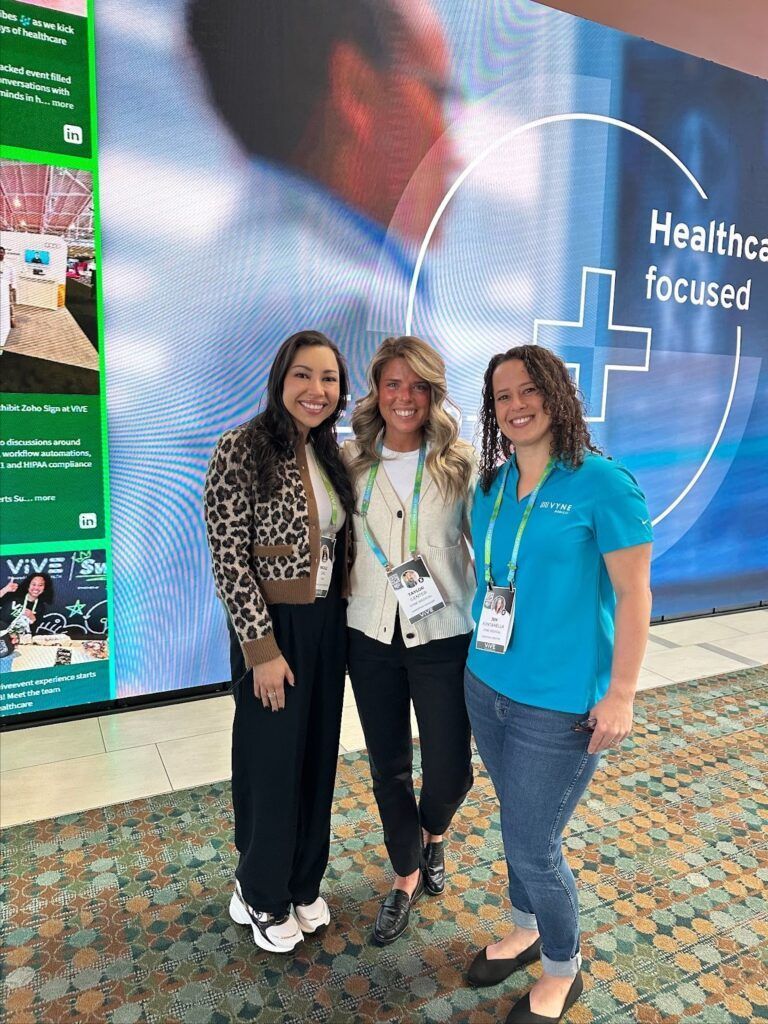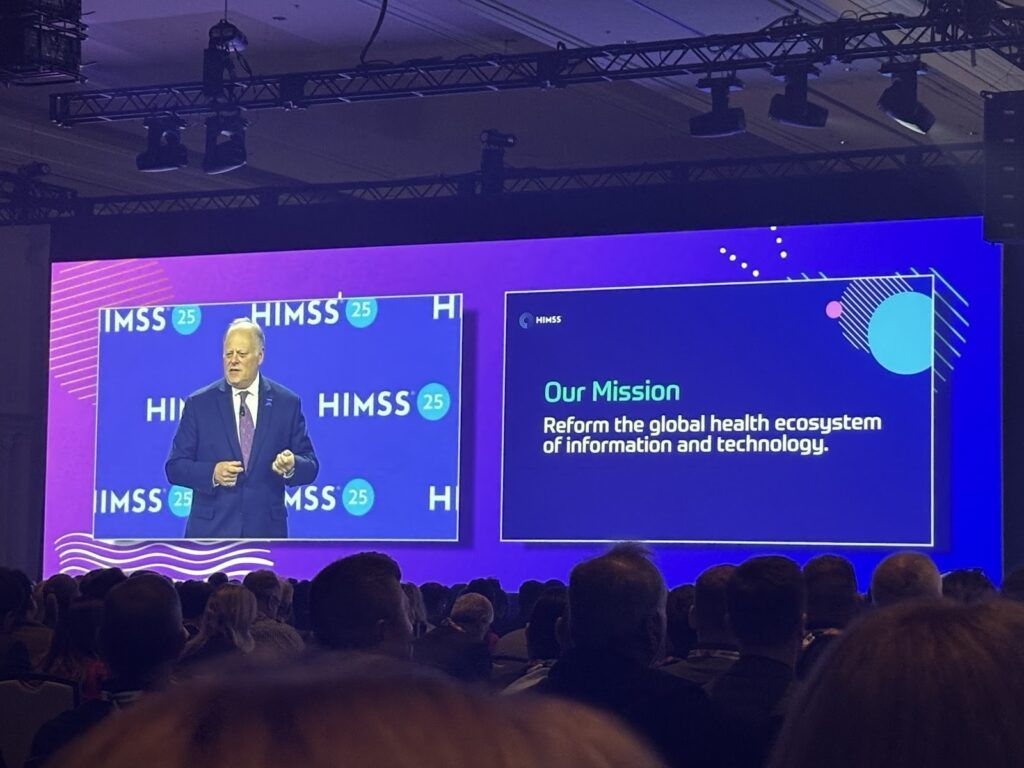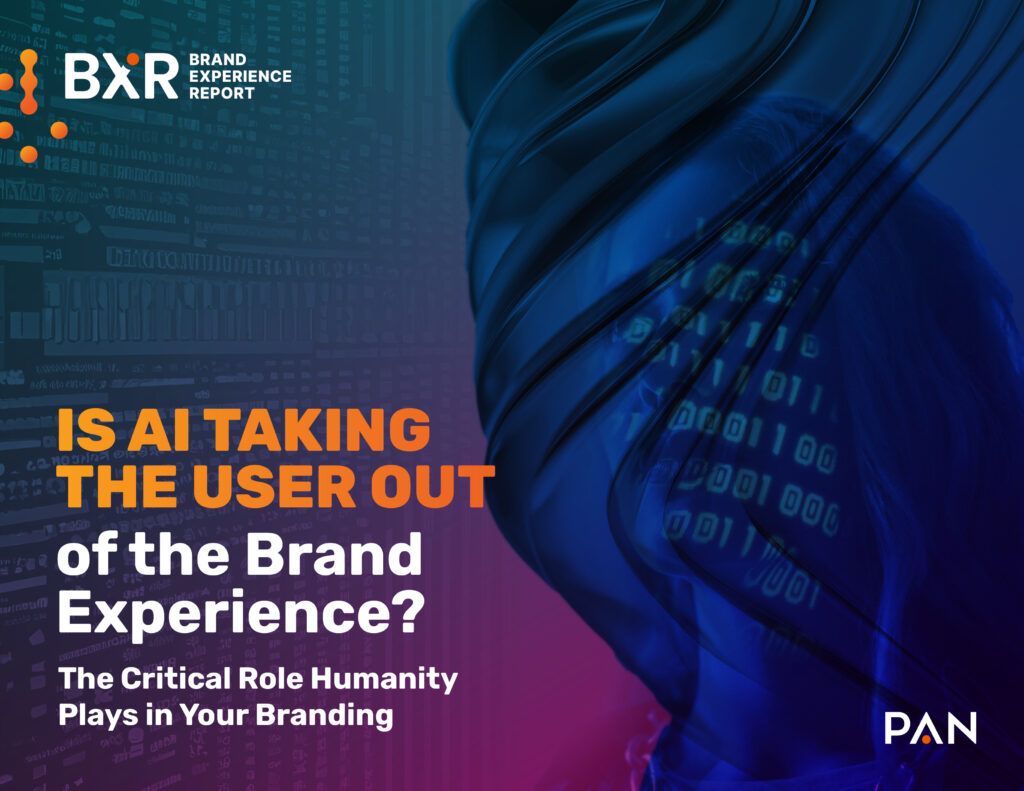Healthcare is evolving at an unprecedented pace, from care delivery to AI innovation to wide-sweeping policy changes. And every year, conferences like ViVE, HIMSS, and HLTH offer a front-row seat to the most cutting-edge trends, technologies, and innovations shaping the future of the industry.
>> Related Read: PAN HealthPulse: Election Edition
For those of us in the thick of it, attending these events is more than just a networking opportunity – it’s about gathering critical insights that will drive our work with clients and help shape the conversations within healthcare and health tech.
This blog is our chance to distill some key takeaways from the conferences we’ve attended thus far in 2025, from AI’s rising role in clinical decision making to the emerging opportunities for more seamless data interoperability.
Why? To uncover the trends that matter most to you.
Consider this an ongoing, evolving snapshot of the healthcare landscape, captured directly from the floors of the industry’s most important gatherings. Check back in for updates (there are bound to be more).
ViVE 2025: 5 Healthcare & Healthtech Trends
ViVE 2025 wasn’t just a pulse check on the state of digital health: It was a full-body scan. From the moment the doors opened, it was clear that artificial intelligence would dominate the conversation. But it wasn’t just about shiny new tools or the latest product demos, it also was about something deeper: How do we keep the human element alive as technology advances at warp speed?

From clinician burnout and data sharing challenges to access and equity in care delivery, the conversations were grounded in reality. There was a consistent theme: we are in the business of caring for people, and technology should help us do that better vs. distract us from it.
Below are the top trends that emerged from ViVE – conversations that are shaping where the industry goes next, and what it will take to get there.
1. AI as a Tool, Not a Replacement
AI was everywhere at ViVE, and it was clear that its potential in healthcare is huge, from relieving clinician burnout to streamlining patient communications. But industry experts stressed that AI’s true value lies in its ability to assist, not replace.
At the end of the day, when you have a patient dying of cancer, who will be there to hold their hand?
Vyne Medical put it best: AI can streamline administrative tasks such as prior authorizations and scheduling, allowing healthcare professionals to focus more on what really matters: patient care. But as one speaker put it, “At the end of the day, when you have a patient dying of cancer, who will be there to hold their hand…?”
AI might make processes more efficient, but it can’t replace the human connection that’s essential in healthcare.
>> Related Read: Driving brand visibility & navigating rapid growth
2. Whole-Person Health Is No Longer Optional
One of the strongest (and most human) themes coming out of ViVE was the industry’s renewed commitment to whole-person health. The idea that mental and physical health are deeply interconnected isn’t new, but it’s finally getting the attention it deserves. From keynote stages to hallway conversations, there was a clear shift away from fragmented, condition-specific care and toward a model that looks at the full picture of a person’s life and wellbeing.
This means moving beyond diagnoses and into the day-to-day realities that shape a patient’s health: sleep, stress, family dynamics, nutrition, financial security, and community. For example, stop thinking in terms of “anxiety” or “depression” alone and start thinking about the environments and systems that contribute to those experiences – and how care models can better respond.
Whole-person health asks providers, payers, and innovators to work together to close gaps between disciplines and systems. It’s a mindset shift, and it’s one that’s long overdue.
3. Bridging the Healthcare Technology Gap Requires Strategic Data Sharing
ViVE also highlighted the growing gap between the cutting-edge technology available in healthcare and its real-world implementation.
As one speaker noted: “It’s not about checking a box saying ‘Yup, we do AI.’ It’s about looking at the strategy and analysis.”
The challenge is to integrate technologies that can truly enhance patient care, such as AI and automation, while ensuring data is shared effectively across systems to avoid inefficiencies.
It’s not about checking a box saying ‘Yup, we do AI.’ It’s about looking at the strategy and analysis.
This is where the issue of data silos comes in. Today, patients are often tasked with repeating their medical history to different doctors, and these same care teams must repeat the same questions that previous medical professionals have already asked. There’s a fragmentation here, and technology should be able to solve it.
4. Healthcare Systems Must Evolve to Support Patients
The financial pressures facing healthcare systems aren’t new, but the urgency around solving them is reaching a boiling point. At ViVE, it was clear that health systems can no longer afford to wait for incremental fixes – especially as Medicare Advantage continues to expand. As one panelist put it, no matter who’s sitting in the Oval Office, seniors want the same things: mobility, independence, and a system that’s navigable when they need care most.
But today’s Medicare infrastructure often feels like a maze. Benefits are confusing. Support is scattered. And far too often, the “non-medical” services that matter most, like food assistance or transportation, go underused.
The solution isn’t just better benefits; it’s better coordination and communication. That’s especially important when roughly one-third of Medicare Advantage enrollees report dissatisfaction with their care because they don’t understand their benefits.
The solution: modernizing Medicare to reflect how seniors actually live and what they value in their care experience. The path forward will require both policy reform and innovation, particularly from organizations willing to rethink how care is accessed and delivered at scale.
5. Accessibility & Personalization in Care Must Accelerate
One message that resonated loudly at ViVE: there will never be enough mental health providers. (Nearly a quarter of American adults deal with a mental illness, after all.) But even if there were enough providers, a one-size-fits-all approach still wouldn’t work. Speakers and attendees alike stressed the importance of tailoring mental health care to fit the individual. That’s particularly true for high-acuity patients who need more intensive support.
Group therapy, for instance, emerged as a critical solution, particularly for adolescents facing stigma or isolation. Meanwhile, in-person referrals remain essential for those who require more than virtual or asynchronous care. The common thread? Patients need (and deserve) more control over their treatment paths. That includes options, flexibility, and access to care that respects their preferences, their needs, and their pace.
As more intelligent tech solutions enter the picture, the role of digital tools shouldn’t be to replace this nuance but to enable it. That means AI and automation should be working behind the scenes – streamlining administrative hurdles and creating space for more meaningful patient-clinician connection, not cutting it short.

Want to read more about ViVE? Check out this LinkedIn post from Senior Account Supervisor, Nicole Das (pictured on the left!).
HIMSS 2025: 5 Healthcare & Healthtech Trends
HIMSS 2025 made one thing clear: Healthcare transformation is no longer a distant ambition. It’s already happening, and it’s happening fast. This year’s event didn’t just spotlight emerging tech, it also dove into the hard questions: How do we implement AI responsibly? How do we secure our systems from ever-evolving cyber threats? How do we make healthcare more accessible, more affordable, and more human?

From the show floor to the main stage, conversations were rooted in the lived experiences of administrators, patients, providers, and everyone in between. Policy uncertainty loomed large. Cybersecurity vulnerabilities were front and center. And the drumbeat for more personalized patient engagement was impossible to ignore.
Below are the five trends that stood out most from HIMSS 2025 – trends that aren’t just shaping the future of healthcare but actively redefining it today.
1. Agentic AI Is Gaining Ground…But “Caution” Is the Keyword
AI wasn’t just a buzzword at HIMSS; it was the backbone of many discussions. But unlike earlier years, the tone in 2025 was more measured. The focus has shifted from “What can AI do?” to “What should it do?” and “How can we use it responsibly?”
Enter agentic AI: tools that go beyond surface-level automation to actively assist patients along their journey. (Think: personalized appointment reminders, triage support, and intelligent scheduling.) Dr. Meung Hi Son, CMIO at Samsung Medical Center, emphasized that agentic AI must be carefully curated if we want it to be embraced by clinicians and patients alike. Or, as his colleague Dr. Park noted during the opening keynote: “Technology can’t be a gem. It must be a light that guides us through the darkest path.”
But alongside the optimism – Gartner has predicted that by 2028, agentic AI will handle at least 15 percent of day-to-day work decisions – there was a clear call for regulation and governance. Many sessions called out the need for explainable AI, bias testing, and clinical oversight. The consensus? The tools are promising, but implementation must be thoughtful.
2. Patient Engagement Is Getting a Long-Overdue Upgrade
One thing that came through loud and clear at HIMSS: the way we engage patients needs to catch up to the rest of their digital experiences. As Ethan Bechtel of OhMD put it, “Consumers expect their healthcare experience to match what they get from retail and banking – seamless, intuitive, human.”
The conversation wasn’t just about tools; it was about outcomes. Disha Rustogi from Twilio shared how conversational AI, when done right, doesn’t replace the human connection; it enhances it. Whether it’s reducing confusion around billing, improving appointment scheduling, or supporting medication adherence, personalized messaging is becoming table stakes.
The spicy take from the panel? Rich Communication Services (RCS) could soon render the traditional patient portal obsolete – and most patients won’t miss it.
3. Cybersecurity Demands Radical Collaboration
There’s no sugarcoating it: healthcare is under siege from cyber threats. Just bear in mind that, on average, 15 million patient records are exposed in breaches every month.
HIMSS 2025 spotlighted the sector’s vulnerability, particularly among rural hospitals, which serve nearly half of the U.S. population and are often the least resourced.
In his keynote, General Paul Nakasone (U.S. Cyber Command) didn’t mince words. Healthcare must adopt the same radical collaboration models that have worked in national security. That includes real-time data sharing, public-private partnerships, and a stronger talent pipeline to fill cybersecurity gaps.
As one speaker noted: “These are not hypothetical threats. They’re happening daily. And the healthcare sector can’t afford to play catch-up anymore.”
>> Related Read: 2025 Cybersecurity Predictions: Turning Lessons into Action
4. Data Interoperability Is Starting to Click – But Remains a Work in Progress
Data silos have long been the bane of healthcare innovation, but at HIMSS, there were real signs of progress. From wearable integration to electronic health record (EHR) simplification, the industry is moving toward a more connected future – one where data flows to the right people at the right time.
Megan Zweig from Rock Health explained how consumer health data, from Apple Watches to at-home diagnostics, is becoming a key driver of insight. But turning that data into action still requires systems that talk to each other. “It’s technically easier now,” said Dan Gannon from iRhythm, “but expectations are higher than ever.”
That sentiment was supported by a recent study examining EHR’s role in patient care. The takeaway: EHRs are responsible for key treatment improvements…and there are many opportunities to build on this progress.
So, what’s the next frontier? Going beyond connectivity and into context – using data not just to inform but to guide patient decisions and uncover connections that were previously hidden (like links between cardiac irregularities and chronic conditions like diabetes).
5. Mental Health and Affordability Are Shaping the Future of Care Delivery
Two topics wove their way through nearly every conversation at HIMSS: (1) the growing mental health crisis; and (2) the crushing cost of care.
We’re in an affordability crisis… and no one thinks it’s getting better anytime soon.
On the mental health front, Vaile Wright from the American Psychological Association emphasized that while telehealth and AI tools have expanded access, they don’t solve for capacity. “Telehealth increases access, but it doesn’t increase reach,” she explained – meaning we still need more providers, better care models, and policies that support prevention and integration.
Affordability, too, was a hot-button issue. Dugan Winkie of Cedar didn’t hold back: “We’re in an affordability crisis… and no one thinks it’s getting better anytime soon.“
Case in point: 55 percent of American adults have incurred medical debt. What’s more: experts anticipate costs will rise even more, with an eight percent year-on-year medical cost trend in 2025 for the Group market (and 7.5 percent for the Individual market).
The solution? Smarter engagement, better cost transparency, and connecting patients with underutilized benefits like Medicaid, ACA subsidies, and prescription support.
It’s clear the road ahead requires new thinking – and new tools – to make care not just more effective, but more equitable.

Want to read more about HIMSS? Check out this LinkedIn post from Director, Katie Johnston and this LinkedIn post from me!
What’s Next for Healthtech Innovation in 2025?
If these healthcare conferences are any indication, 2025 won’t be a year of slow, steady change: it will be one of necessary transformation. The conversations we heard on-site were urgent, complex, and refreshingly honest.
AI isn’t just a tool – it’s a test. True interoperability isn’t a buzzword – it’s a barrier we need to finally break. And personalizing care isn’t just about experience – it’s about outcomes, equity, and trust.
These events reminded us that the future of healthcare isn’t being shaped in boardrooms. It’s being shaped on the ground: by clinicians struggling with burnout, by patients navigating fragmented systems, and by innovators who see a better path forward and are bold enough to build it.
We’ll be adding to this running blog throughout the year as our team hits the road for more of the industry’s top healthcare and technology conferences. Follow along as we continue to surface the insights, themes, and real-world conversations shaping the next era of care – one trend at a time.
Let’s forge a new path for healthcare together.



